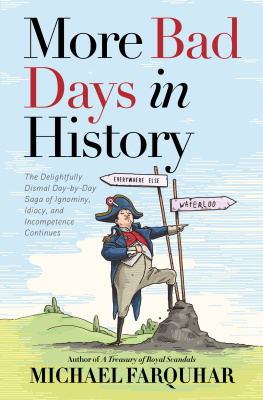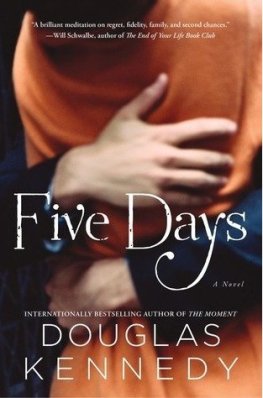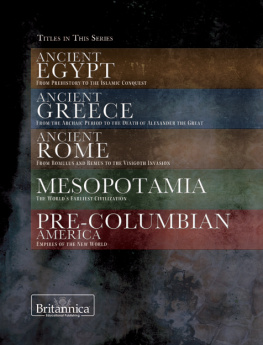Contents
Guide
Also by Michael Farquhar:
Bad Days in History: A Gleefully Grim Chronicle of Misfortune,
Mayhem, and Misery for Every Day of the Year
Secret Lives of the Tsars: Three Centuries of Autocracy, Debauchery, Betrayal, Murder, and Madness From Romanov Russia
Behind the Palace Doors: Five Centuries of Sex, Adventure,
Vice, Treachery, and Folly From Royal Britain
A Treasury of Foolishly Forgotten Americans: Pirates,
Skinflints, Patriots, and Other Colorful Characters Stuck
in the Footnotes of History
A Treasury of Deception: Liars, Misleaders, Hoodwinkers,
and the Extraordinary True Stories of Historys Greatest Hoaxes,
Fakes, and Frauds
A Treasury of Great American Scandals: Tantalizing True Tales
of Historic Misbehavior by the Founding Fathers
and Others Who Let Freedom Swing
A Treasury of Royal Scandals: The Shocking True Stories
of Historys Wickedest, Weirdest, Most Wanton Kings,
Queens, Tsars, Popes, and Emperors
Published by National Geographic Partners, LLC
1145 17th Street, NW, Washington, DC 20036
Copyright 2021 Michael Farquhar. Illustrations copyright 2021 Giulia Ghigini. All rights reserved. Reproduction of the whole or any part of the contents without written permission from the publisher is prohibited.
Excerpt from SONG OF SPIDER-MAN: The Inside Story of the Most Controversial Musical in Broadway History by Glen Berger. Copyright 2013 by Glen Berger. Reprinted with permission of SSA, a division of Simon & Schuster, Inc. All rights reserved.
NATIONAL GEOGRAPHIC and Yellow Border Design are trademarks of the National Geographic Society, used under license.
ISBN: 978-1-4262-2146-0
eBook ISBN: 978-1-4262-2157-6
Since 1888, the National Geographic Society has funded more than 13,000 research, exploration, and preservation projects around the world. National Geographic Partners distributes a portion of the funds it receives from your purchase to National Geographic Society to support programs, including the conservation of animals and their habitats.
Get closer to National Geographic explorers and photographers, and connect with our global community. Join us today at nationalgeographic.com/join
For rights or permissions inquiries, please contact National Geographic Books Subsidiary Rights:
Interior design: Melissa Farris and Nicole Miller
Printed in the United States of America
21/VP-PCML/1
To Mary
January 23, 1968,
was actually a very Good Day.
Historyis, indeed, little more than the register of the crimes, follies, and misfortunes of mankind.
Edward Gibbon, The Decline and Fall of the Roman Empire (17761788)
Or, as Voltaire had already put it:
History is nothing more than a tableau of crimes and misfortunes.
LIngnu (1767)

L ets face itmany book sequels lack the vital essence of the original. Joseph Heller, Louisa May Alcott, and the stand-in for the long-dead Margaret Mitchell all flopped with their follow-ups to the original classics. Even Milton blew it with his all-but-forgotten Paradise Regained.
But happily, when it comes to the annals of unfortunate events, we have only to plunge into the past for an endlessly rich source of entertaining material. Thus, far from being condemned to repeat Bad Days in History, we get to celebrate More of them.
The variety of events in these pages may seem dizzying as we take a daily hop through the centuriesfrom a deranged emperors unfortunate boy-bride in ancient Rome (October 13) to a vice presidents gag-inducing smooch in modern America (August 17). In between, we drop in to witness the on-set tyranny of an otherwise beloved comedienne (May 14), the romantic cluelessness of a scientific genius (July 29), and the killer hijinks of a genocidal 10th-century saint (July 11).
Genocidal? Yes, some entries teeter a little more toward the dismal than the delightful. Hopefully, though, we can squeeze out a few smirks over some of the racist and otherwise unsavory characters who occasionally make an appearance here. Take the murderous mobsters who get theirs on November 14right along with the equally loathsome FBI director on the very same day. Or the perpetually forlorn uber-Nazi, into whose aggrieved diary we take a gleeful peek on May 13.
Leaping from the pages of history and into this irreverent collection are horribly behaved heroes, hotheaded sports stars, frosty spouses, floundering Founding Fathers, viciously mean mothers, squabbling generals, disrespected royals, and so many other notable personages who experienced (or caused) some extraordinarily Bad Days. Let them serve as guideslending perspective to those readers navigating through their own problems, while allowing everyone else a few laughs.
I had a very happy New Years, an ebullient Charles Guiteau announced to the courtroom, and hope every body else did.
It may seem odd to begin a book of Bad Days with someone having a good one. But wait: The merry reveler in question had recently murdered the 20th president of the United States, James A. Garfield. And despite the heinousness of that crime, his jailers allowed Guiteau to host a party in his cell over the holiday weekend. I had plenty of visitors, the self-satisfied assassin reported, high-toned, middle- toned and low-toned peopleThey dont, any of them, want me hung. Everybody was very glad to see me. They all expressed the opinion without one dissenting voice that I would be acquitted.

In what The New York Herald branded a curious and disgusting spectacle, Guiteau had indeed received hundreds of peopleto inflame and gratify the assassins vanity and indulge their own morbid curiosity. Women as well as men came seeking autographs. What is stranger still, the Herald reported, there were women unwomanly enough to bring their little children along with them and allow them to shake hands with this vulgar murderer and wish him a Happy New Year.
While the slain presidents widow and five children remained shrouded in grief, Guiteau enjoyed the status of a semi-celebrity in the nations capital, where he had gunned down Garfield the previous July. spawned quite a followingnot unlike those in the 20th century who would become infatuated with killer Charles Manson. Guiteau even used his notoriety to solicit a wifewho should be, he specified, a nice Christian lady under 30 years of age.
The narcissists bath in the limelight was a brief one: Contrary to his oft stated conviction that he would be spared the noose, Guiteau died on the gallows a year after achieving infamy. A grandstander to the end, the killer read a poem he had written for the occasion of his execution, I am Going to the Lordy.















